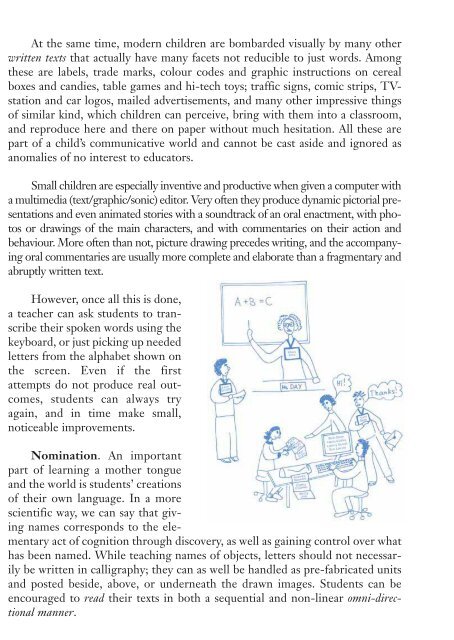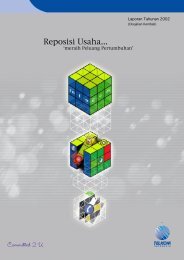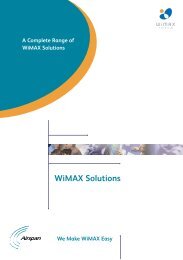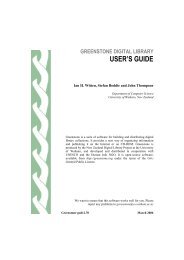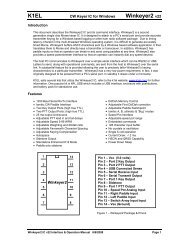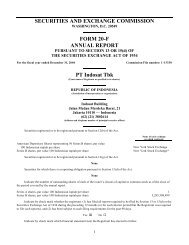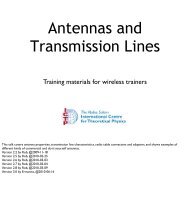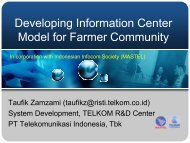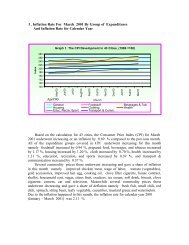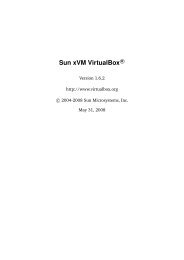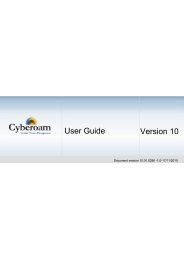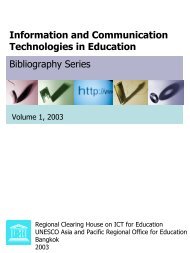Information and communication technologies in schools: a ...
Information and communication technologies in schools: a ...
Information and communication technologies in schools: a ...
Create successful ePaper yourself
Turn your PDF publications into a flip-book with our unique Google optimized e-Paper software.
At the same time, modern children are bombarded visually by many other<br />
written texts that actually have many facets not reducible to just words. Among<br />
these are labels, trade marks, colour codes <strong>and</strong> graphic <strong>in</strong>structions on cereal<br />
boxes <strong>and</strong> c<strong>and</strong>ies, table games <strong>and</strong> hi-tech toys; traffic signs, comic strips, TVstation<br />
<strong>and</strong> car logos, mailed advertisements, <strong>and</strong> many other impressive th<strong>in</strong>gs<br />
of similar k<strong>in</strong>d, which children can perceive, br<strong>in</strong>g with them <strong>in</strong>to a classroom,<br />
<strong>and</strong> reproduce here <strong>and</strong> there on paper without much hesitation. All these are<br />
part of a child’s communicative world <strong>and</strong> cannot be cast aside <strong>and</strong> ignored as<br />
anomalies of no <strong>in</strong>terest to educators.<br />
Small children are especially <strong>in</strong>ventive <strong>and</strong> productive when given a computer with<br />
a multimedia (text/graphic/sonic) editor. Very often they produce dynamic pictorial presentations<br />
<strong>and</strong> even animated stories with a soundtrack of an oral enactment, with photos<br />
or draw<strong>in</strong>gs of the ma<strong>in</strong> characters, <strong>and</strong> with commentaries on their action <strong>and</strong><br />
behaviour. More often than not, picture draw<strong>in</strong>g precedes writ<strong>in</strong>g, <strong>and</strong> the accompany<strong>in</strong>g<br />
oral commentaries are usually more complete <strong>and</strong> elaborate than a fragmentary <strong>and</strong><br />
abruptly written text.<br />
However, once all this is done,<br />
a teacher can ask students to transcribe<br />
their spoken words us<strong>in</strong>g the<br />
keyboard, or just pick<strong>in</strong>g up needed<br />
letters from the alphabet shown on<br />
the screen. Even if the first<br />
attempts do not produce real outcomes,<br />
students can always try<br />
aga<strong>in</strong>, <strong>and</strong> <strong>in</strong> time make small,<br />
noticeable improvements.<br />
Nom<strong>in</strong>ation. An important<br />
part of learn<strong>in</strong>g a mother tongue<br />
<strong>and</strong> the world is students’ creations<br />
of their own language. In a more<br />
scientific way, we can say that giv<strong>in</strong>g<br />
names corresponds to the elementary<br />
act of cognition through discovery, as well as ga<strong>in</strong><strong>in</strong>g control over what<br />
has been named. While teach<strong>in</strong>g names of objects, letters should not necessarily<br />
be written <strong>in</strong> calligraphy; they can as well be h<strong>and</strong>led as pre-fabricated units<br />
<strong>and</strong> posted beside, above, or underneath the drawn images. Students can be<br />
encouraged to read their texts <strong>in</strong> both a sequential <strong>and</strong> non-l<strong>in</strong>ear omni-directional<br />
manner.<br />
ICT <strong>in</strong> Learn<strong>in</strong>g <strong>and</strong> Teach<strong>in</strong>g<br />
147


